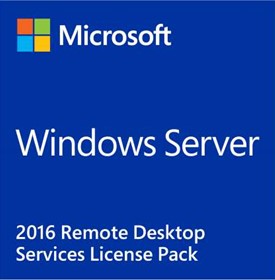

- User cal vs rds cal full#
- User cal vs rds cal software#
- User cal vs rds cal Pc#
- User cal vs rds cal windows#
In a dynamic architecture, on the other hand, there is only one master image of the desktop stored. In static mode, there is a one-to-one mapping of VMs to users. In a VDI deployment, there are two models, a static or persistent virtual desktop and a dynamic or non-persistent one.
User cal vs rds cal windows#
The concept of VDI is to store and run desktop workloads including a Windows client operating system, applications, and data in a server-based virtual machine (VM) in a data center to allow a user to interact with the desktop presented via Remote Desktop Protocol (RDP). VDI is a centralized desktop delivery solution.
User cal vs rds cal Pc#
The desktop could be a normal PC or a Virtual Machine.
User cal vs rds cal full#
Virtual Desktop Infrastructure (VDI) is a term used to describe users accessing a full desktop Operating System (OS) environment remotely. Although they may have few similarities but it is important to get the understanding of both the concepts to get a clear idea. In today’s Information technology world, Virtual Desktop Infrastructure (VDI) and Remote Desktop Services (earlier known as Terminal Services) are the most used terms and people often get confused between these two.

Yes, you’d still need to procure the additional RDP CAL licensing if you’ll need more than two concurrent RDP connections to the virtual machine.įor any further information related to Microsoft products, you can reach out to us by creating a ticket at Foetron Support Portal.
Also remote desktop service session host require CAL’s, for an Azure VM do we have to procure them separately incase we require more than 2 concurrent connections ?. This is the type that will be used automatically with the Pay-as-you-go option. If this will be a large number or impossible to predict (such as if it’s open-ended to your customers and you don’t know the total number of potential users) then you should use core-based licensing. Yes, if you’re utilizing CAL licensing instead of core-based, then you would need to account for the total number of potential users accessing the database, even indirectly (i.e. When exactly do we need the CAL licenses for SQL serve, if the client is accessing the database indirectly do we still need the CAL licenses ?. In that case, you would need to configure it as a Remote Desktop Services session host and utilize RDS/RDP CALs to increase this limit. The Windows Server licenses are all being taken care of as part of the normal the VM compute costs – There is no need for any additional licensing there unless you’re needing more than two RDP sessions open at the same time. Note: T his is all relating to the SQL Server licensing aspect. User cal vs rds cal software#
If you are referring to having SQL Server manually installed on a Windows Server VM using your own licensing, then the licensing requirements are the same as an on-premises environment, with the added condition of the license requiring License Mobility to be brought into Azure i.e Software Assurance. You need to maintain the appropriate CALs as per your usage/access needs.  If you’re using a BYOL(Bring your own license) machine, all licensing is being handled by your Enterprise Agreement volume license subscription. All licensing is included in the per-minute billing and is done as core-based, not CAL. If you’re using a PAYG(Pay as you go) machine, no CAL is needed. Modified on: Fri, 31 Aug, 2018 at 1:36 PMĬAL licensing and RDP licensing query on Azure
If you’re using a BYOL(Bring your own license) machine, all licensing is being handled by your Enterprise Agreement volume license subscription. All licensing is included in the per-minute billing and is done as core-based, not CAL. If you’re using a PAYG(Pay as you go) machine, no CAL is needed. Modified on: Fri, 31 Aug, 2018 at 1:36 PMĬAL licensing and RDP licensing query on Azure







 0 kommentar(er)
0 kommentar(er)
